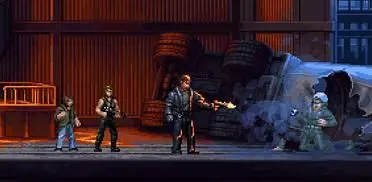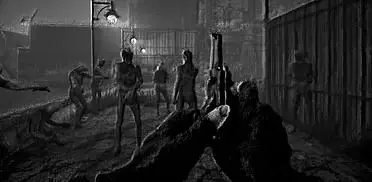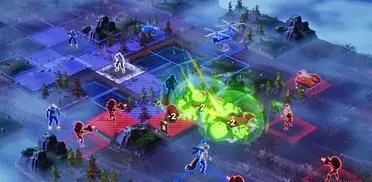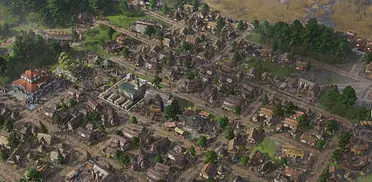 |
| I'm no physician, but I appear to have bullet holes in my chest |
It does this in a wide variety of ways. First and foremost is the mission system, which gives players the opportunity to select missions, in-game based on the character class, to progress further in the level, open up new paths, and gain more points. The mission toggle is easy to use, just by holding a single button and turning the right analog stick to the mission of your choice. Missions that other team members are currently working on will appear highlighted so players can work together.
This system helps players who don’t know each other work as a team. A strong team will consist of players who spread their class types, allowing each to do what the other cannot, such as one acting as a medic while another acts as an engineer and hacks systems, while yet another acts as a defender/attacker and keeps the enemy at bay. It’s Team Fortress 2 with more grit and customization, and a larger array of options per game. It’s not just about capturing bases or killing enemies, but about accomplishing missions and working as a team. An excellent player can carry an entire team in most other games. In Brink, a good team will always beat an excellent player with a weak team.
Teamwork only goes so far though, as players don’t always want to stick with the same class and the same missions. That’s why players can change classes at any time during the game by finding rearming stations. Each class has a selection of missions that can be performed, and many of those missions are team-based, meaning you can work with one other player or the entire team to complete a given mission. There are some solo missions as well, but regardless of what you choose to do, it will almost always end up being a team effort.
As the developer’s told us, this system forces players to work in teams, much like Left 4 Dead does. Though instead of throwing hordes of AI baddies at players, Brink makes gameplay revolve around a let-the-best-team-win philosophy. There’s only one thing a bad team who doesn’t work together do properly as a team: lose.
Finally, the S.M.A.R.T. system which got us so interested in the game in the first place ends up being almost an afterthought compared to all the team-based applications Brink is attempting to establish. Players can hop over boxes, jump up to previously unreachable places, slide into cover and more with what is normally a run toggle in today’s FPS titles. With S.M.A.R.T., gameplay becomes more about finding opportunities to use the system to your advantage, such as finding better routes to accomplish your mission, flanking enemies, or getting to a hard-to-reach place. S.M.A.R.T. discreetly improves gameplay in such a way that it’s only when you go back to an older game, you realize how limited it is when you can’t jump to a far landing and actually catch the ledge instead of plummeting to the ground or death.
 |
| That's right... come to papa |
Brink is set for release in early 2011 for the Xbox 360, Playstation 3 and PC.




